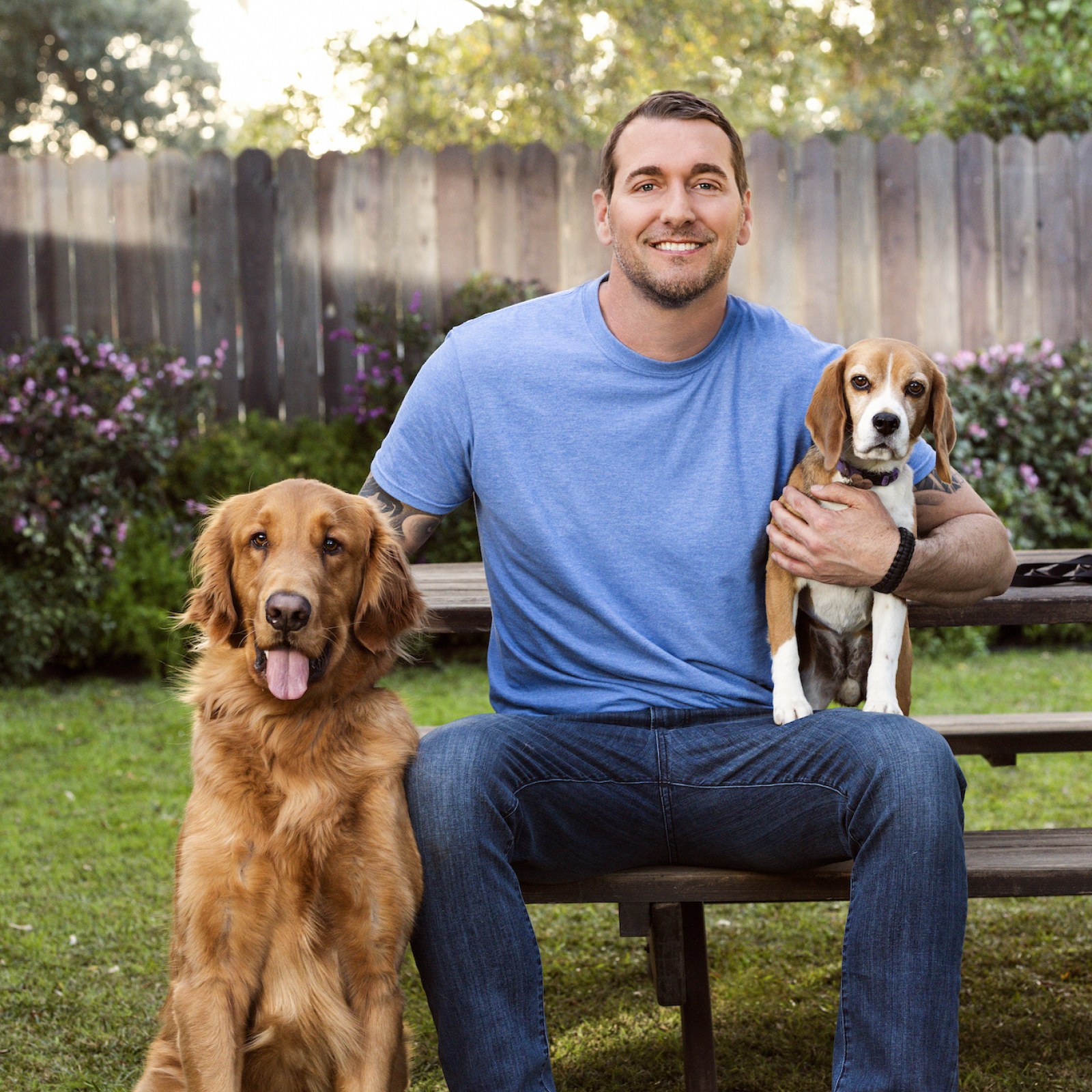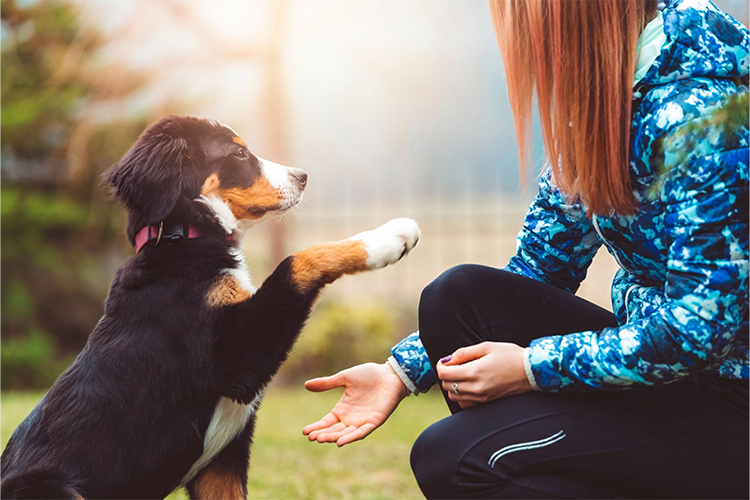Understanding Dog Body Movement Throughout Dog Training
Understanding Dog Body Movement Throughout Dog Training
Blog Article
Necessary Tips for Successful Dog Training: A Guide for Family Pet Owners
Reliable pet training is a multifaceted process that requires a calculated strategy customized to both the pet dog's temperament and the owner's objectives. Secret elements such as establishing constant commands, utilizing positive reinforcement, and assisting in very early socialization play important duties in cultivating a well-adjusted canine friend. Nonetheless, several pet dog proprietors run into obstacles that can prevent development, causing stress and unpredictability. Comprehending how to navigate these barriers can dramatically boost the training experience, eventually transforming the partnership in between owner and dog. What are the essential approaches that can be used to make sure success in this endeavor?
Comprehending Canine Habits
Understanding canine behavior is important for effective training and promoting an unified partnership between canines and their owners. dog training. Pet dogs connect primarily with body language, articulations, and activities, making it crucial for owners to interpret these signals precisely.

Socialization plays a significant role in canine behavior; exposure to numerous settings, individuals, and various other animals can considerably affect a canine's temperament. Variables such as breed qualities and individual personality should direct training techniques, as some types might have details behavioral attributes that demand tailored techniques. By comprehending these components, owners can create a helpful setting that urges positive behavior, causing successful training end results and a deeper bond with their animals.
Establishing Constant Commands
Efficient communication with your canine starts with developing constant commands. This fundamental aspect of training is important for fostering understanding between you and your pet dog. Consistency in the commands you make use of makes certain that your canine can accurately connect details words or phrases with the wanted behaviors.
When picking commands, choose clear, unique words that are very easy to state and differentiate from each other. Stay clear of using similar-sounding commands that might confuse your canine. Utilizing "sit" and "remain" is ideal, but "sit" and "struck" can lead to misunderstandings.
Furthermore, preserve the very same tone and quantity for each command. Canines are delicate to singing signs, so differing your tone can produce confusion.
It is just as essential to make certain that all relative are on the same page regarding the commands made use of. A united front in command use will avoid mixed signals and enhance the understanding procedure.
Positive Support Techniques
The power of favorable support in canine training lies in its capacity to motivate desired actions with rewards and appreciation. This method is grounded in the concept that behaviors followed by desirable results are most likely to be repeated. By incorporating favorable reinforcement right into your training regimen, you can properly shape your dog's habits in a constructive fashion.
To execute favorable reinforcement, it's important to recognize what motivates your pet, whether it be treats, playthings, or verbal appreciation. When your canine executes a preferred activity, such as sitting on command, promptly reward them with a reward or love. This association in between the command and the positive result reinforces their understanding.
It's important to timing the rewards properly; supplying the reinforcement within seconds of the wanted behavior assists your dog make the connection (dog training). In addition, consistency is essential-- guarantee that all relative use the very same commands and incentive systems to stay clear of confusion

Gradually, you can lower the frequency of treats as your pet learns the behavior, transitioning to applaud or recurring incentives. This method not only promotes a solid bond in between you and your dog however likewise promotes a favorable learning environment, making training a delightful experience for both.
Socialization and Interaction
Regularly subjecting your pet dog to a selection of settings, individuals, and various other pets is essential for their social advancement. Socialization must start early, preferably throughout the important home window of 3 to 14 weeks, when pups are most responsive to brand-new experiences. Older pets can additionally profit from continuous socializing efforts.
Introduce your canine to different settings, such as parks, pet-friendly stores, and urban locations. This direct exposure aids them adjust to different stimuli, minimizing stress and anxiety and concern reactions. Motivate positive communications with various other pet dogs and people, guaranteeing that these encounters are secure and regulated to cultivate self-confidence.
Make use of structured playdates with genteel pet dogs, as this can enhance your pet's social browse around this web-site abilities and educate them appropriate actions. Obedience classes and training sessions also supply outstanding opportunities for socializing, allowing your pet dog to communicate with others in a monitored environment.
Display your dog's body movement during communications, as this will certainly assist you determine their comfort degree. Gradually boost direct exposure to more tough situations while making certain that each experience is positive. A well-socialized pet dog is most likely to show balanced habits, making them a joy to have in any type of setup.
Addressing Typical Training Obstacles
Every dog owner will certainly encounter training difficulties eventually, despite their canine's age or socializing degree. Identifying common problems such as stubbornness, disturbances, and fearfulness can help in establishing reliable strategies view it for improvement.

Disturbances throughout training sessions can thwart emphasis. To battle this, start training in a quiet atmosphere with very little stimuli. Slowly introduce interruptions as the pet dog ends up being a lot more skillful in commands. Short, regular training sessions are likewise reliable in maintaining attention.
Terror can prevent a pet dog's discovering process. Gradual desensitization to the source of anxiety, coupled with positive support, can assist minimize anxiety. Perseverance is critical; never ever require a dog right into a circumstance that causes distress, as this might worsen the issue.
Inevitably, understanding and resolving these typical challenges with an organized method will cultivate a more effective training experience, enhancing the bond between pet and owner while advertising efficient learning.
Verdict
In summary, effective canine training relies on a detailed understanding of canine behavior, the facility of consistent commands, and the application of favorable reinforcement methods. Socialization plays a critical function in creating well-adjusted animals, while addressing typical training challenges needs patience and versatility. By applying these vital strategies, family pet proprietors can foster a solid bond with their pets and promote preferable actions, ultimately bring about a harmonious connection in between humans and their canine buddies.
Recognizing dog habits is crucial for effective training and promoting an unified partnership between dogs and their proprietors.Socializing plays a substantial role in canine behavior; exposure to various environments, people, and various other animals can dramatically influence a canine's character.The power of favorable support in pet training exists in its ability to encourage preferred habits with benefits and appreciation. By including favorable support right into your training routine, you can effectively shape your dog's behavior in a constructive manner.
In summary, successful dog training relies on an extensive understanding of canine behavior, the establishment of consistent commands, and these details the application of positive support strategies.
Report this page